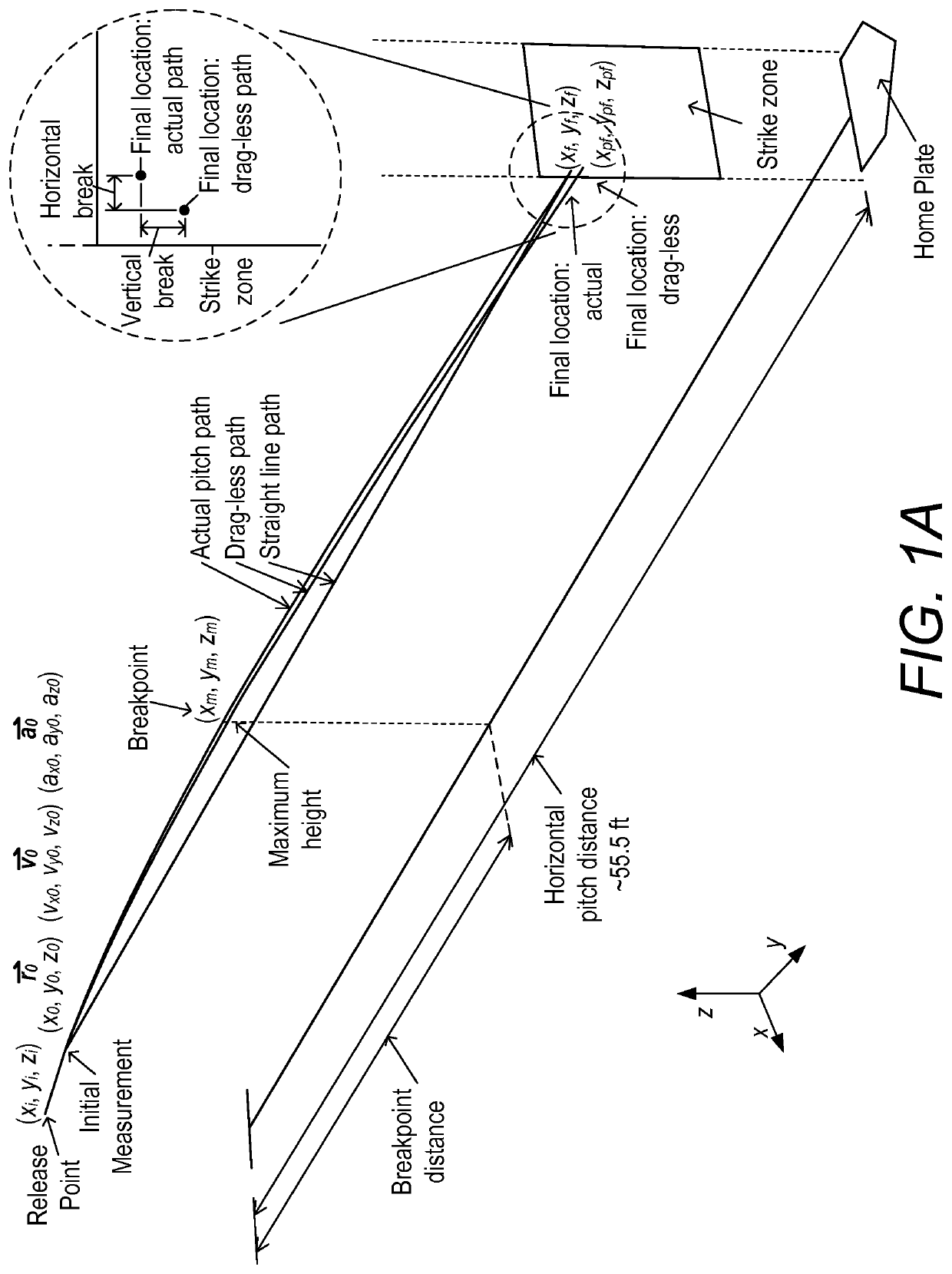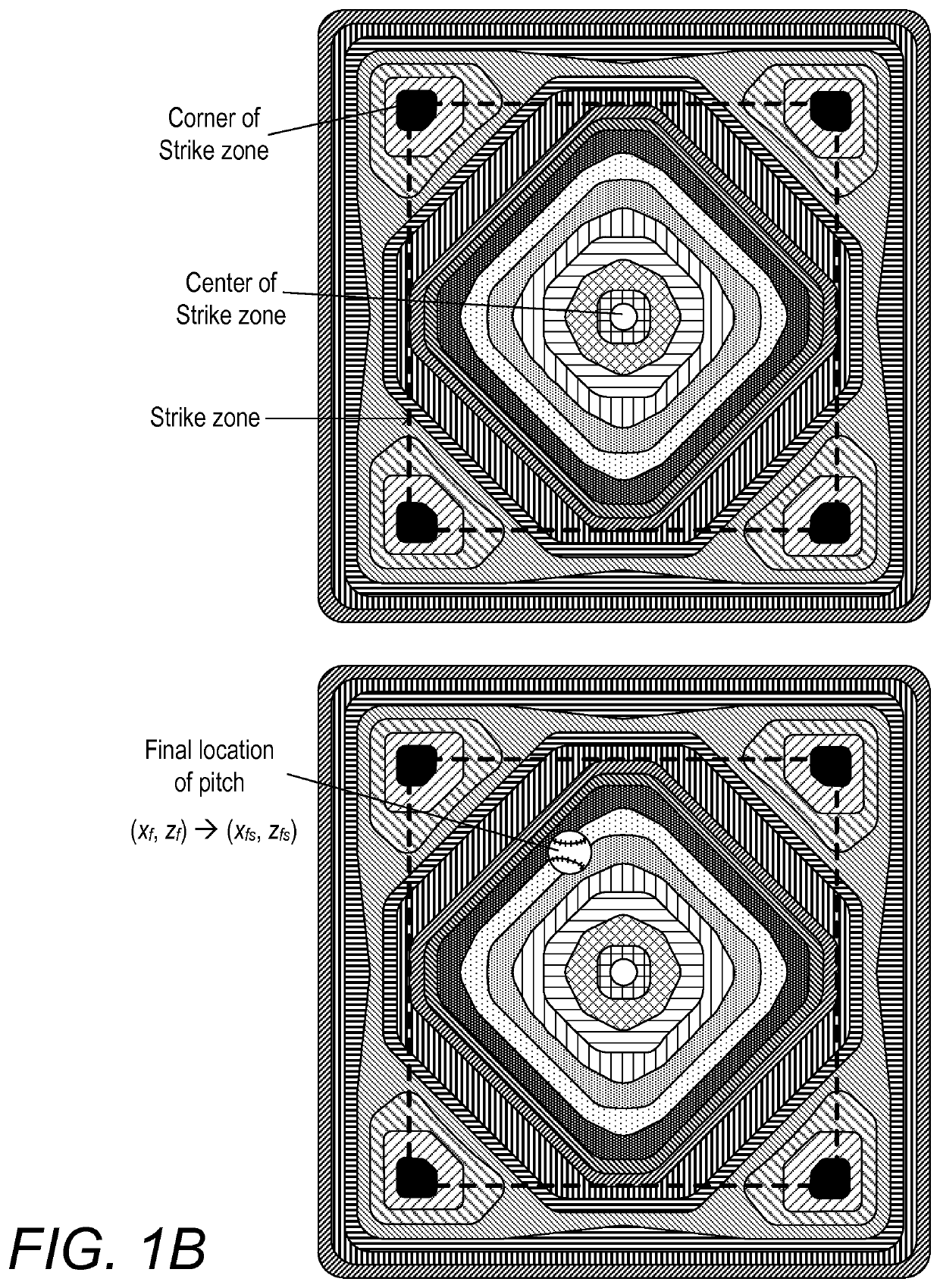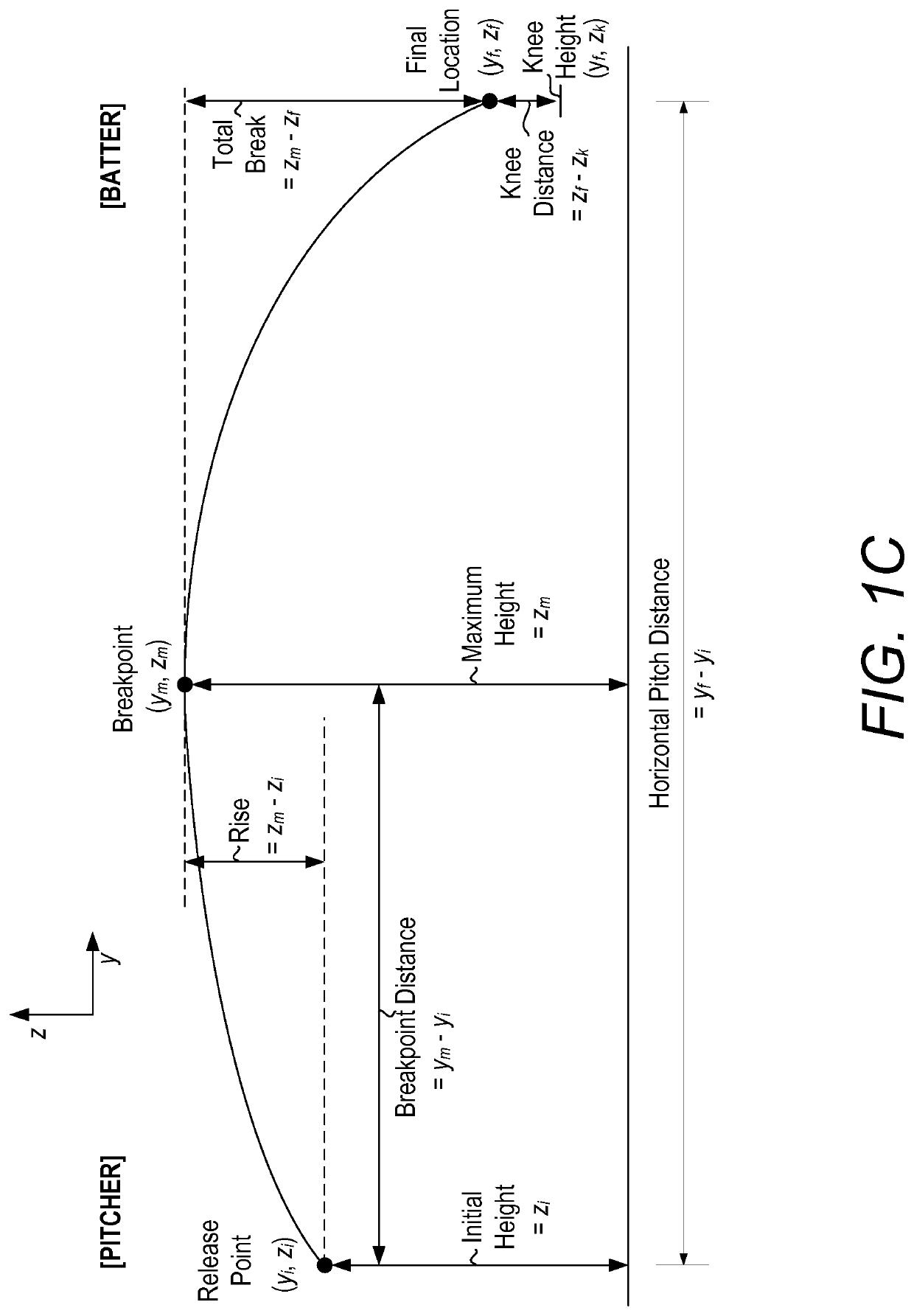[0008]The present disclosure provides for systems, devices, and methods of assigning a quality metric to pitches in baseball through detection and analysis of the pitch's flight path and speed. The quality metric, or pitch rating, can be configured to convey quickly and accurately an idea of the quality of the pitch. The use of this pitch rating can advantageously provide for a standard rating system that can be used to compare different pitches and different pitchers. This can be beneficial for casual viewers of a baseball game as it can provide information about the pitch quality for each pitch, information that is not necessarily tied to the speed of each pitch. It can also advantageously enable a pitcher and / or coach to gauge and track improvement in pitches or pitch performance over time, being able to compare different throwing techniques, performance in different situations, performance against different batters, etc. The pitch rating can be used as a training tool wherein a coach or player can adjust the mechanics of the pitching motion to increase the average pitch rating for one or more types of pitches. The pitch rating can be used in scouting pitchers by providing a standardized and / or uniform metric to compare pitchers who play in different leagues, levels, countries, etc. This can allow personnel to compare pitchers objectively, removing or reducing effects such as, for example, batters a pitcher faces, umpires, weather, etc. The pitch rating can be used by coaches during baseball games to assess the pitcher's performance and trends in performance to know when to replace a particular pitcher in a game. The pitch rating can be used over the course of many games to assess performance and trends in performance to identify potential risk factors for a particular pitcher, such as identifying potential for injury where pitch quality decreases over the course of several games or weeks. The pitch rating can leverage the expertise of a number of pitchers and pitching coaches by adjusting the pitch rating calculation to statistically correlate with subjective ratings of pitches. In this way, the pitch rating can standardize what had previously been a subjective analysis.
[0011]In some implementations, the pitch rating can be adjusted based on the batter facing the pitcher at the time of the pitch. For example, the final location component of the trajectory metric can be adjusted to have a higher or lower value for pitches that are inside (e.g., closer to the batter) versus pitches that are outside (e.g., further from the batter) or that are higher or lower in the strike zone. This can aid in providing an assessment of pitch quality that accounts for the handedness of the batter (e.g., a right-handed or a left-handed batter). As another example, the final location component of the trajectory metric can be adjusted relative to a strike zone that is defined for a particular batter, taking into account the batter's size, stance, and other factors. This can allow for coaches and pitchers to determine the quality of pitches thrown to particular batters, accounting for batter tendencies, preferences, weaknesses, etc. Similarly, the pitch rating can be adjusted based on the result of the pitch. For example, called strikes and / or foul balls can increase the pitch rating and called balls and / or hits can decrease the pitch rating.
[0023]In some embodiments of the fourth aspect, the system includes a detection system configured to detect a position, velocity, and acceleration of the ball at a point in time. In some embodiments of the fourth aspect, the pitch parameter module calculates a position of the ball as a function of time or at a plurality of points in time. In some embodiments of the fourth aspect, the pitch parameter module calculates a velocity of the ball as a function of time or at a plurality of points in time. In some embodiments of the fourth aspect, the pitch parameter module calculates an acceleration of the ball as a function of time or at a plurality of points in time. In some embodiments of the fourth aspect, the pitch parameter module determines a position of the ball in 3 dimensions as a function of time or at a plurality of points in time. In a further embodiment of the fourth aspect, the pitch parameter module reduces the dimensionality of the position of the ball to a horizontal and a vertical dimension as a function of time or at a plurality of points in time.
[0030]In some embodiments of the sixth aspect, the pitch is a breaking pitch. In some embodiments of the sixth aspect, the pitch is a non-breaking pitch. In some embodiments of the sixth aspect, the system comprises a detection system configured to detect a position of the ball as a function of time or at a plurality of points in time. In some embodiments of the sixth aspect, the pitch parameter module extracts the velocity of the ball as a function of time or at a plurality of points in time. In some embodiments of the sixth aspect, the pitch parameter module extracts the acceleration of the ball as a function of time or at a plurality of points in time. In some embodiments of the sixth aspect, the pitch parameter module extracts the position of the ball in 3 dimensions as a function of time or at a plurality of points in time. In a further embodiment, the pitch parameter module reduces the dimensionality of the position of the ball to a horizontal and a vertical dimension as a function of time or at a plurality of points in time.
 Login to View More
Login to View More  Login to View More
Login to View More 


